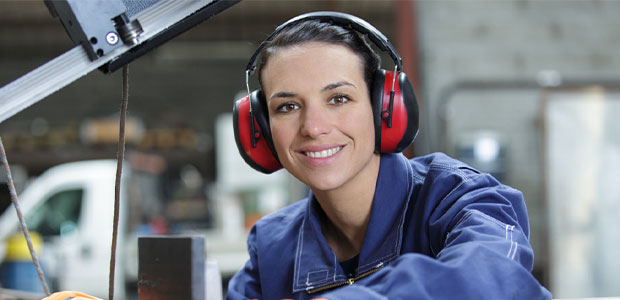
Tackling Hearing Protection in the Workplace
Despite the risk of irreversible damage to health, one-third of noise-exposed workers report not wearing hearing protection.
- By Tim Turney
- Dec 01, 2021
Noise-induced hearing loss is the most prevalent occupational disease in the world. In the U.S., 22 million workers are exposed to hazardous noise each year, placing them at risk of injuries that can permanently impair their quality of life. Whenever hearing is damaged from on-the-job conditions, workers are entitled to compensation. OSHA estimates that employers spend $242 million annually on workers’ compensation for hearing loss disability.
Despite the risk of irreversible damage to health, one-third of noise-exposed workers report not wearing hearing protection. Although hearing protection is a ‘first aid’ measure until it is possible to reduce noise exposure to a safer level through changes to the tools, equipment and schedules used, knowledge of its application can dramatically increase its effectiveness.
Determining Who Needs Hearing Protection
A noise survey will determine which employees need hearing protection. The survey should list employees and their exposure, then compare their exposure to the maximum permissible exposure limit. In line with the OSHA regulations, hearing protection should be made available to employees exposed to noise dose levels above 85dB(A). The noise dose is based on the sound exposure level and duration, so for each increase 5-dB in noise levels, the duration of the exposure should be cut in half.
Noise monitoring provides accurate insights into the noise levels of a working environment so that businesses can identify at-risk employees and ensure they adhere to OSHA regulations. However, professionals undertaking the monitoring should be trained and prepared sufficiently with the right equipment as minor errors in noise level estimates can lead to major errors in exposure calculations.
Two pieces of equipment essential for the assessment are the sound level meter, primarily designed as a hand-held device used by an operator, and the noise dosimeter, which a staff member wears for their working shift. A sound level meter is an ideal solution for measuring the overall noise level of a task, piece of machinery or area. On the other hand, dosimeters are best for personal noise measurements where it is difficult or unsafe to get close to employees with a sound-level meter because dosimeters are smaller and body-mounted. For example, a dosimeter would be ideal for forklift truck drivers exposed to many different noise levels and irregular working patterns.
This article originally appeared in the November/December 2021 issue of Occupational Health & Safety.